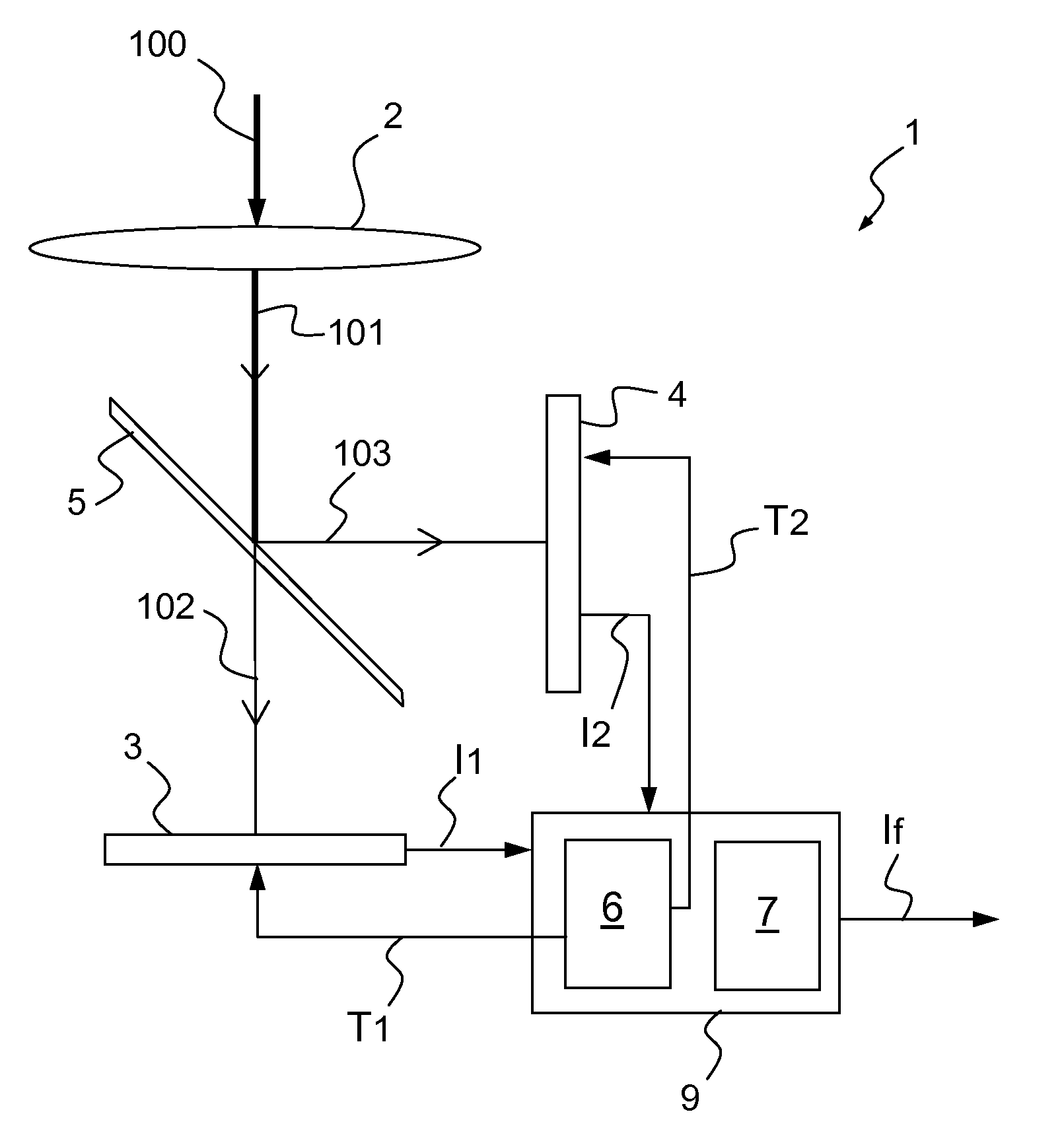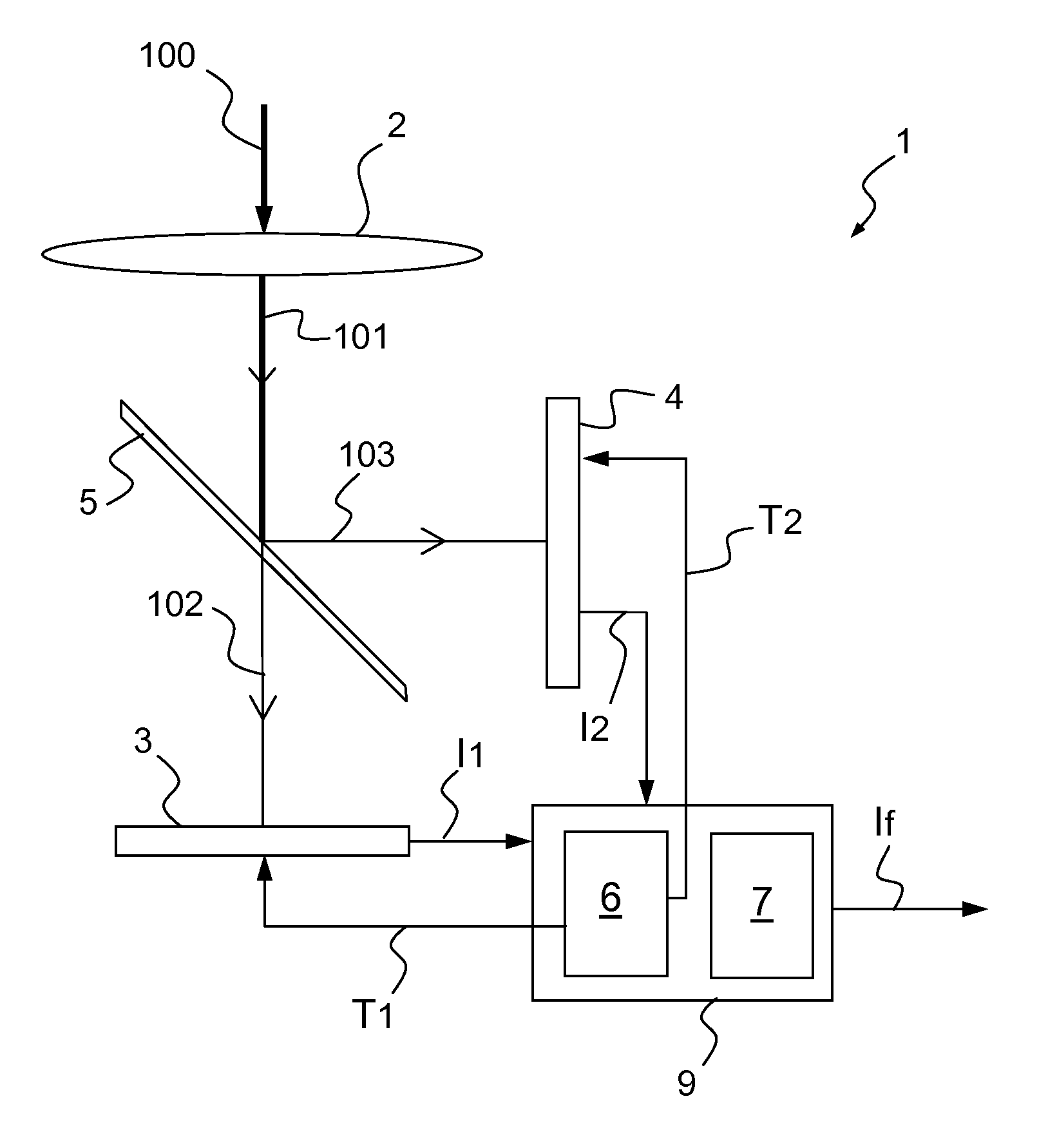Acquisition system for images having a high dynamic range
a dynamic range, acquisition system technology, applied in the field of real-time acquisition systems of image sequences, can solve the problems of increasing the overall acquisition time, complex processing operations, and not allowing real-time capture of images sequences, and achieves high image sequence rate, wide dynamic range in illumination, and high resolution of scenes.
- Summary
- Abstract
- Description
- Claims
- Application Information
AI Technical Summary
Benefits of technology
Problems solved by technology
Method used
Image
Examples
first embodiment
[0083]In a first embodiment, the separation means 5 are configured in such a manner that the difference between the first fraction 102 and the second fraction 103 is the maximum difference that does not result in any distortion being generated in the final image.
[0084]Typically, the second fraction 103 is in the range between a lower fraction (greater than 0%) and 10% of the irradiance of the beam 101. Consequently, the first fraction 102 is in the range between 90% of the irradiance coming from the focussing optics and an upper fraction corresponding to the difference between 100% and the lower fraction.
[0085]The lower fraction and the upper fraction are the respective high and low limits beyond which the final image exhibits distortions.
[0086]The applicant has observed that the maximum dynamic range is obtained with a first fraction 102 of 95% and a second fraction 103 of 5% of the irradiance of the beam 101.
[0087]In this configuration, the sensor illuminated by the weakest irradi...
second embodiment
[0088]In a second embodiment, the first fraction of the irradiance is approximately equal to 50%. The term “approximately equal to 50%” is understood to mean that the second fraction is either equal to 50% or in the range between 20% and 50% of the irradiance coming from the focussing optics. This second case (first fraction in the range between 50 and 80%) is valid when the first sensor is the low-luminance sensor.
[0089]This embodiment is advantageous when it is desired to mainly gain in resolution of the system while at the same time conserving the possibility of increasing the dynamic range acceptable by the system in the case of presence of dazzling light in the field. As a result, a system having a better resolution than one using a single sensor is obtained. For example, in the case where the two sensors 3, 4 are offset with respect to one another by half a pixel along the rows and along the columns of pixels, an image having a resolution four times higher than the image comin...
PUM
 Login to View More
Login to View More Abstract
Description
Claims
Application Information
 Login to View More
Login to View More - R&D
- Intellectual Property
- Life Sciences
- Materials
- Tech Scout
- Unparalleled Data Quality
- Higher Quality Content
- 60% Fewer Hallucinations
Browse by: Latest US Patents, China's latest patents, Technical Efficacy Thesaurus, Application Domain, Technology Topic, Popular Technical Reports.
© 2025 PatSnap. All rights reserved.Legal|Privacy policy|Modern Slavery Act Transparency Statement|Sitemap|About US| Contact US: help@patsnap.com



